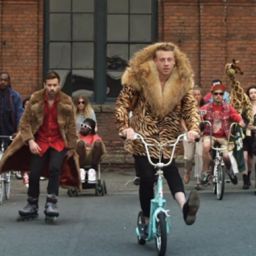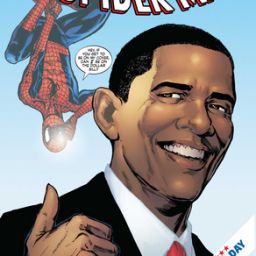The New York Times recently had an article about the recent makeovers of some of your favorite (and least) favorite 80s icons, including Strawberry Shortcake. (International Herald Tribune version here). Another site had a hypothetical breakdown of what the costs of Ms. Shortcake’s makeover would be.
“We’re downplaying characters that were part of Strawberry’s world but who didn’t immediately shout out fruit.”
It was interesting that the NY Times article spent time discussing the marketing “mistake” that was Magic Earring Ken — tiptoeing around discussing the large secondary market for the doll (considering what his “earring” was popularly considered to be) — “he seemed to have come out of the closet — something that Mattel most definitely did not intend.”
These redos / restarts are also an attempt to give a sense of brand loyalty through the ability to morph characters into a closer approximation of self (see Hello Kitty):
“You want a dark, Goth version of Tweety Bird? Have at it,” said Lisa Gregorian, executive vice president for worldwide marketing at Warner Brothers Television.
I wonder what will happen when the line between licensed offshoots and fan-driven images and products becomes increasingly blurred — and the IP owners want to take back control. The U.S. approach to fan appropriation is usually a sharp contrast to Japan (birthplace of Hello Kitty!) where doujinshi (fan-made versions of comics) is part of a above-ground consumer culture — complete with contests and rules for participation.
This issue of control has happened before — when the Simpsons first came out there were a large number of unlicensed shirts marketed / worn by African-American /”urban” audiences. And according to the urban dictionary, tweety is being used as a term for white Americans that wear licensed “urban” (read: BLACK!) Tweety shirts. Is this something Warner Brothers will later try to crack down on?
Of course, many that are familiar with the originals became emotional on blogs when discussing the remodeled version of Strawberry Shortcake — the unrealistic body image/sexuality expectations for girls today, the death of children playing, or simple nostalgia. However, no comments I’ve seen have commented on what every woman of a certain age I’ve talked to has mentioned as Strawberry’s main draw — huffing their chemical hair. Though hardly a gateway drug, at parties little girls would all bring their various dolls together to linger over the highly artificial scents emanating from their hair. And argue about which one was the best — not in terms of cuteness, smartness, or niceness — but in terms of scent. And that’s one to grow on!




